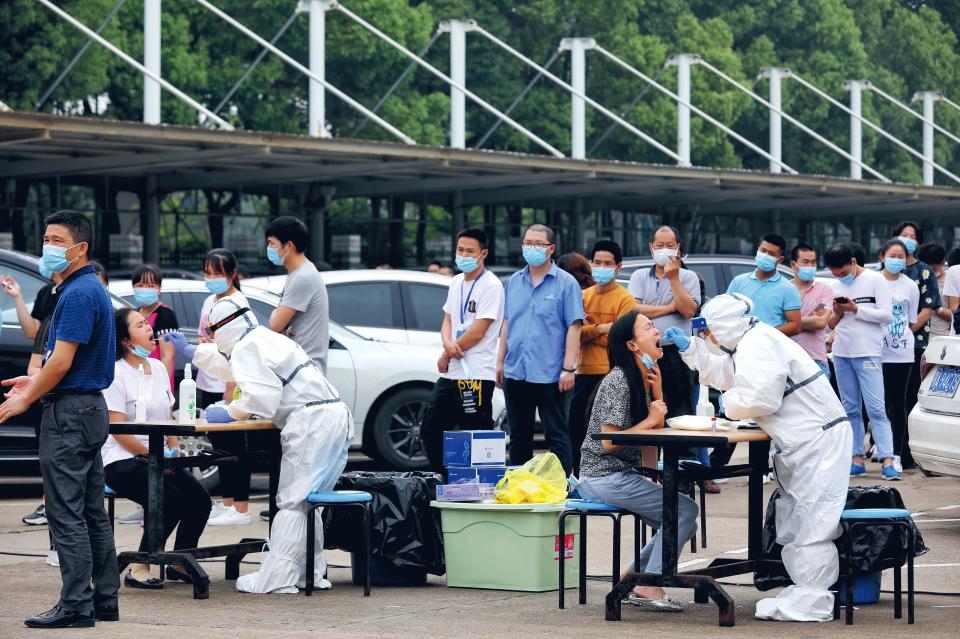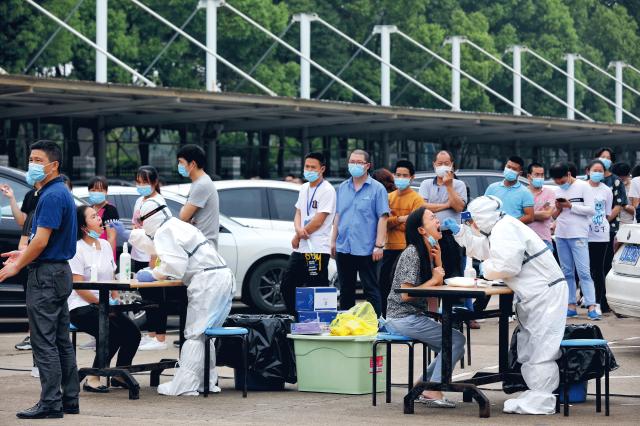Wuhan health authorities organized staggered times for testing across residential communities to prevent cross infection. Both permanent and temporary residents who had not tested positive for Covid-19 could be tested, with priority given to residents in communities where confirmed cases were reported, as well as those living in older and densely-populated residential buildings. Children under six were not encouraged to be tested. In addition, all tests were conducted in designated outdoor public spaces. Health workers also paid door-to-door visits to some elderly and disabled residents.
Li Hang told our reporter that in a few residential communities, some people were reluctant to be tested for fear of cross-infection.
Many medical personnel in the city were involved in the endeavor. According to a doctor at Wuhan Red Cross Hospital who spoke on condition of anonymity, his hospital sent 20 medical teams each with more than 100 staff to many residential communities in Jianghan District and more than 10,000 swab test samples were conducted a day. A doctor from Zhongnan Hospital of Wuhan University told our reporter that his hospital also sent more than 200 nurses to nearby communities to collect more than 10,000 samples each day.
In Qiaokou District’s Liujiao residential community, around 1,000 people were tested on May 13. “Residents in our community were very supportive. Our aim was to leave no one untested,” Wang Kaiqi, the community’s Party chief, told Hubei Television.
After the samples are collected, they are sent to medical institutions and third-party organizations for testing. According to a report by Health News, Wuhan’s nucleic acid testing capacity is 100,000 samples per day. To accelerate mass testing, Wuhan Health Commission designed a new testing method to combine five to 10 individual samples together to test at one time, a method known as pool testing. If a mixture of samples is positive, further tests are conducted for each person in the group.
Jiang Qingwu said that pool testing has been used for a long time and theoretically, the method will not affect the sensitivity and accuracy of the results, but this depends on the number of individual samples before they are mixed. It is not a foolproof way to identify asymptomatic spreaders.
“If the result of the combined test is positive, it is possible that no individual positive sample is found after extra testing because of the detection reagents and operation methods,” he said. “It could mean they have to start all over again.”
Lan Ke, director of the State Key Laboratory of Virology, Wuhan University, told NewsChina that because of the sensitivity of testing methods and the specificity of samples, as well as the latent period of the virus, nucleic acid testing is able to detect many asymptomatic patients, but it is not always reliable.
According to statistics from Wuhan Health Commission, from May 14 to 18, 1.2 million tests were conducted and 58 asymptomatic patients were found. From May 19 to 23, 5.36 million tests were conducted and 131 asymptomatic patients were found. Lan argued that alongside the increasingly wider scope of detection, the positive rate of testing dropped from 0.47/10,000 to 0.24/10,000. “It showed that the virus transmissibility has gone down,” he said. “The virulence may have weakened as well.”

 Old Version
Old Version
